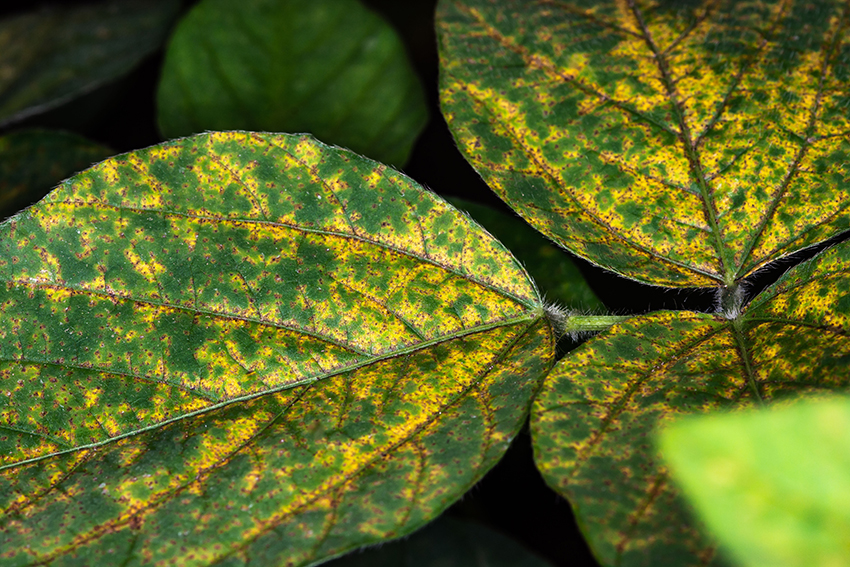As in previous harvests, the month of January has seen a rapid increase in reports of Asian rust in soybean-producing states and municipalities.
According to a survey by the Anti-Rust Consortium, in the 2022/23 harvest, there are 119 reports of the disease and rust is present in nine Brazilian states, with 79% of occurrences in commercial crops in the grain filling phase.
At the same time, in the last harvest, there were 59 reports, however, the climatic conditions were different – less rainfall in the southern region of the country, Mato Grosso do Sul and Paraguay – which reduced the occurrence of the disease.
Researcher Cláudia Godoy, from Embrapa Soja, explains that rust is favored by the well-distributed rainfall throughout this harvest.
“In regions where rainfall is regular, the disease is more common when there are failures in fungicide applications or the fungicides used are not very effective in controlling rust,” explains Godoy.
According to the National Supply Company (Conab), more than 50% of crops are in the grain filling stage (after R5), a situation where the disease causes less damage.
Godoy states that the potential for damage from Asian rust is greater in crops still in the vegetative, flowering and pod formation stages, which receive a greater amount of fungus inoculum from areas sown earlier.
“If favorable conditions for the disease remain, crops that are later in development will require applications of highly efficient fungicides to control the disease,” he warns. “Even the most efficient products for control must be associated with the use of multi-site fungicides, as the rust inoculum increases in the regions,” he comments.
Rust control
The comparison of the efficiency of registered fungicides and those in the registration phase for controlling Asian rust has been carried out in network experiments, carried out since the 2003/2004 harvest, in Brazil.
Fungicides are evaluated individually, in sequential applications, in late sowings, to determine control efficiency.
The most recent results on the efficiency of fungicides for rust control can be accessed in the publication Efficiency of fungicides for the control of Asian soybean rust, Phakopsora pachyrhizi, in the 2021/2022 harvest: summarized results of cooperative trials
Other diseases
The Embrapa researcher also reports the occurrence of other diseases in this harvest.
In the Cerrado regions, for example, where there has been good rainfall distribution in the initial sowings, a high incidence of target spot has been observed.
In addition, in the South region, there are reports of white mold in the higher regions with milder temperatures and the presence of powdery mildew in periods of lower rainfall.
Source: Canal Rural

